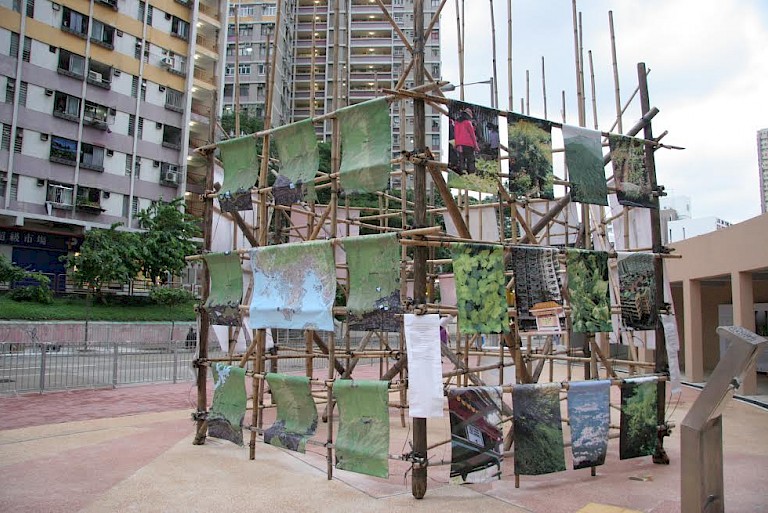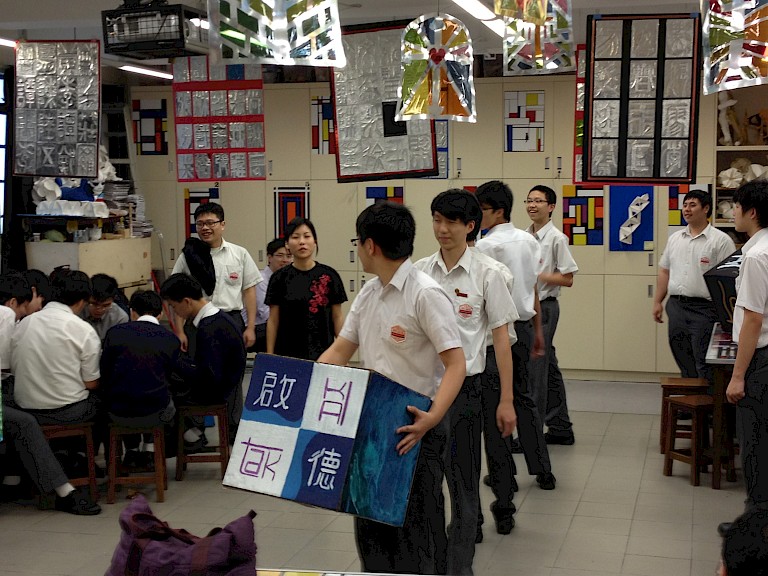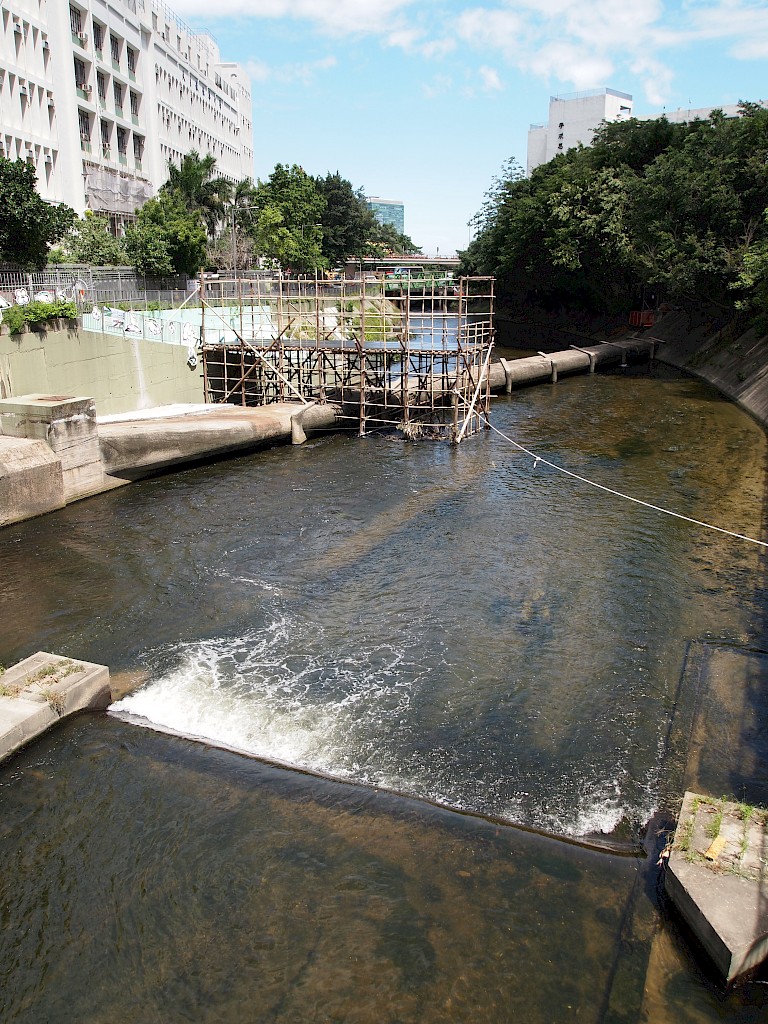



Chang himself spent a significant part of his childhood growing up beside Kai Tak Nullah, and, like some others in the Wong Tai Sin district council, he saw potential for the river to be revitalized. In 2007, Chang was instrumental in having Kai Tak Nullah renamed as Kai Tak River. He believes this change to have been important in reshaping perceptions of the neglected waterway. Through negotiations with district councilors, Chang was invited to explore alternatives to the standing Government decision to cover the river. A change of chairperson in the district council near the end of 2007 provided time for the Community Alliance of Kai Tak to flesh out a framework for KTRGC. Eventually, Chang and others organized a series of artistic and educational projects, receiving funding from the Arts Development Council in 2009 and the Environmental Conservation Fund in 2011, to instigate international artist residencies and participatory arts events in partnership with 17 local schools.
By staging cultural activities, for example, exhibiting the participatory art projects along the river during the 2011 Green Arts Festival, KTRGC temporarily brought new life to the area, building effective ties between residents and the environment. KTRGC also instilled in students an interest in the state of the environment, and the future of Hong Kong, a city with an extraordinarily heavy environmental footprint and extensive problems with water and air pollution. The project stands out as a highly successful creative placemaking intervention and an example of community driven spatial planning, lasting from 2007 to the present day. Various indicators attest to KTRGC’s success, the incorporation of the new name, Kai Tak River, into official plans and documentation; the creation of new relationships between activists, government officials, and agencies; and the establishment of new open space zoning for the area, which allows it to be used as a public park. Most significantly, the river no longer smells offensive, the water is cleaner, and wildlife, birds and fish, are returning to reside in and alongside the waterway.
When asked about his motivations, Chang said, “If we can do something about this, the city/world can be better.” It is difficult to disagree, since not only Hong Kong, but also many other cities in the world urgently need to address issues of waste and ecological sustainability. KTRGC demonstrates how artists, and artistic activities can work with other disciplines such as environmental science and education, political administration, and spatial planning to successfully transform public spaces, in this case, ‘greening’ a city that many perceive to be a congested and polluted concrete jungle.'
All copyright belongs to Shanghai Academy of Fine Arts, Shanghai University.



